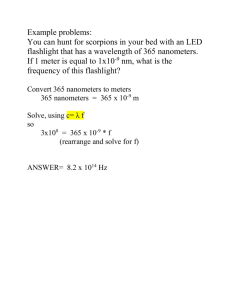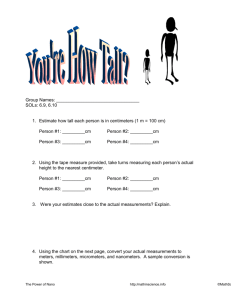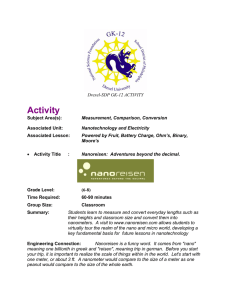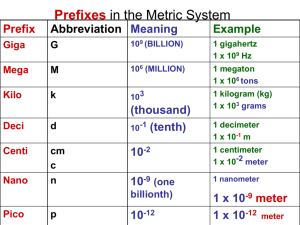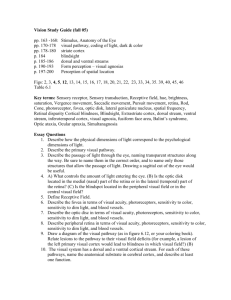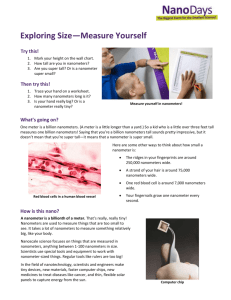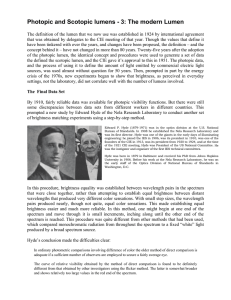PSYC-465 practice test
advertisement
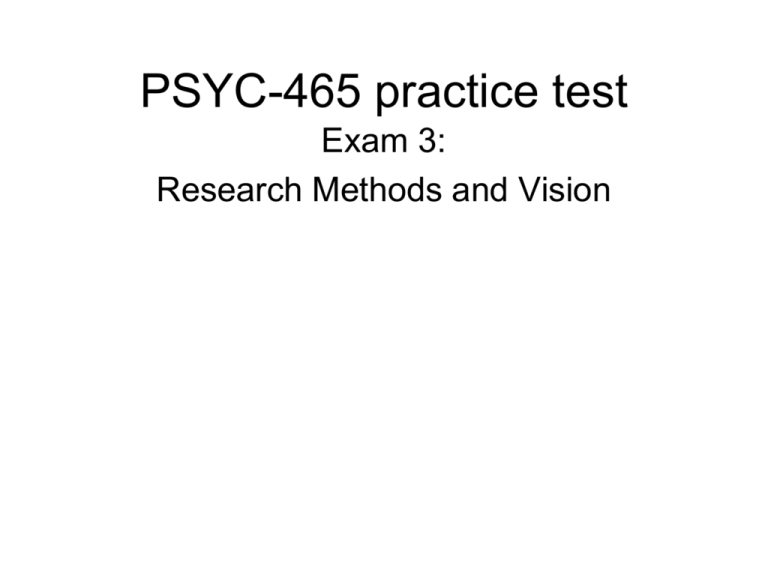
PSYC-465 practice test Exam 3: Research Methods and Vision Ch 6 1. Humans can see electromagnetic waves of energy that have a length of_________. a. 40-90 nanometers b. 380-760 nanometers c. 1,000-4,000 nanometers d. 260-380 nanometers Ch 6 2. The psychological correlates of wavelength and intensity are________, respectively. a. Color and brightness b. Brightness and hue c. Shape and color d. Brightness and shape Ch 6 3. The adjustment of pupil size in response to changes in illumination represents a compromise between________. a. Size and position b. Accommodation and disparity c. Sensitivity and acuity d. Color and shape Ch 6 4. When rhodopsin is moved from the dark to intense light,_________. a. It absorbs light in the same range of wavelengths as the photopic spectral sensitivity curve b. It becomes bleached c. It becomes an intense red color d. It increasese glutamate release Ch 6 5. The photopic visual system is characterized by_______. a. A high degree of convergence onto biopolar cells b. Maximal sensitivity to light in the range of 500 nm c. high visual acuity d. High sensitivity Ch 6 6. Off-center cells include __________. a. Rods and cones b. Retinal ganglion cells c. Simple cortical cells d. Both A and B Ch 7 7. Prosopagnosia is ______. a. An inability to recognize faces b. May be a general inability to recognize individual members of a class of visual stimuli c. Due to damage to secondary visual cortex d. Due to damage to the posterior parietal cortex e. Both A and B f. All except D Ch 5 8. Which of the following is an enhanced contrast X-ray technique that is used to reconstruct several horizontal sections of the brain? a. angiography b. MRI c. pneumoencephalography d. PET e. CAT Ch 5 9. In many stereotaxic atlases of the rat brain, one common reference point is________. a. cregma b. alambda c. bregma d. the tip of the nose Ch 5 10. Which of the following can be determined by extracellular unit recording? a. the amplitude of EPSPs and IPSPs b. the amplitude of APs c. temporal summation d. the rate of firing of a single neuron Lecture 11. Which of the following is NOT true of the triple dissociation lesion study described in class _____________. a. Compares performance on three tasks that are identical except for the type of associative learning required b. is better than behavioral phenotyping in controlling extraneous variables c. Involved the amygdala, striatum and hippocampus d. was conducted with monkeys e. None of the above (all are true) Answers 1.b 2.a 3.c 4. a & b 5.c 6.d 7.f 8.e 9.c 10.e 11.e
